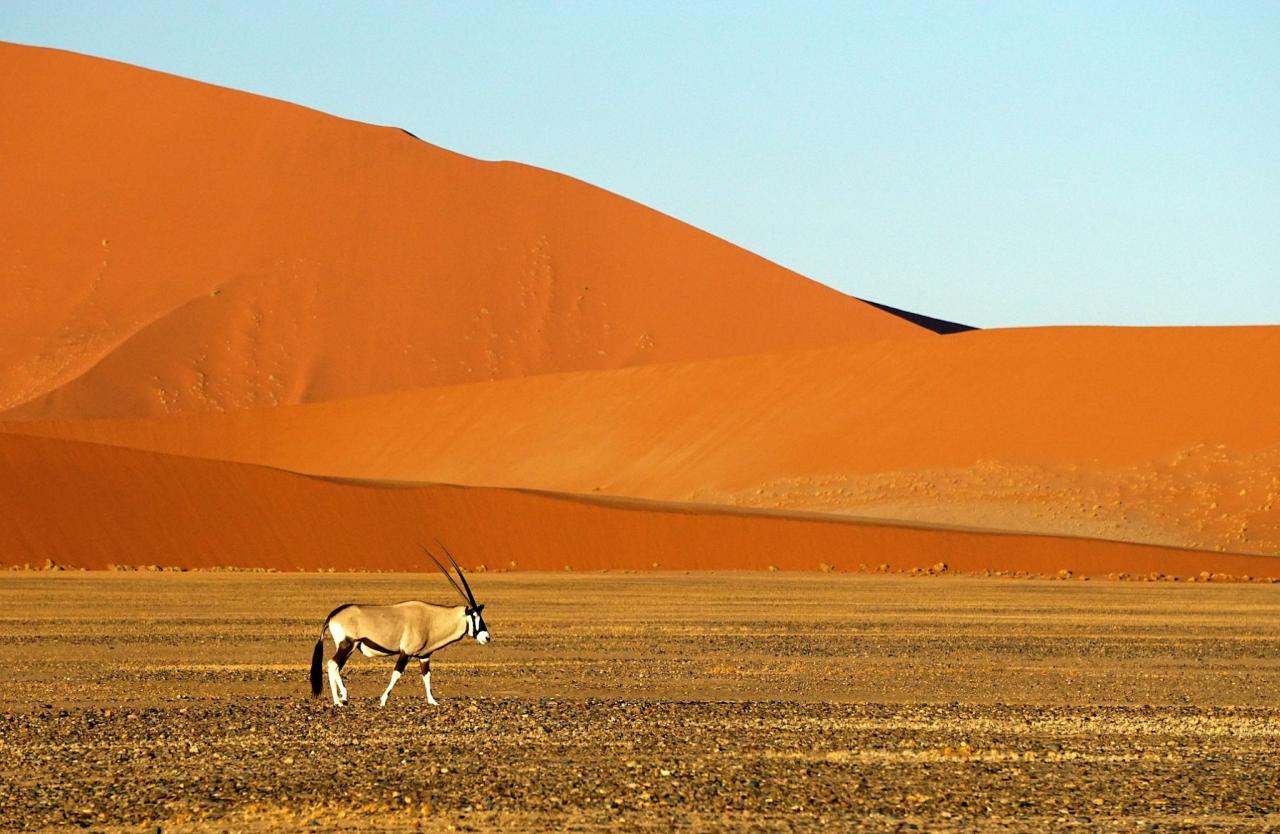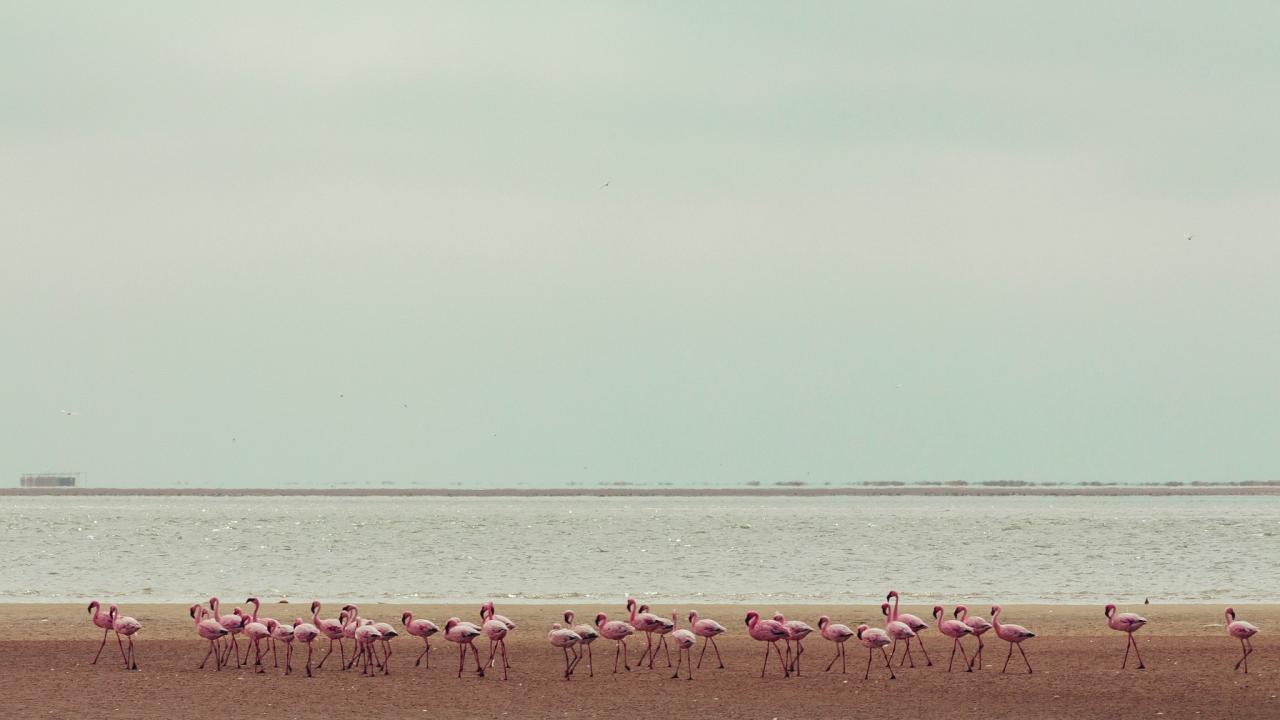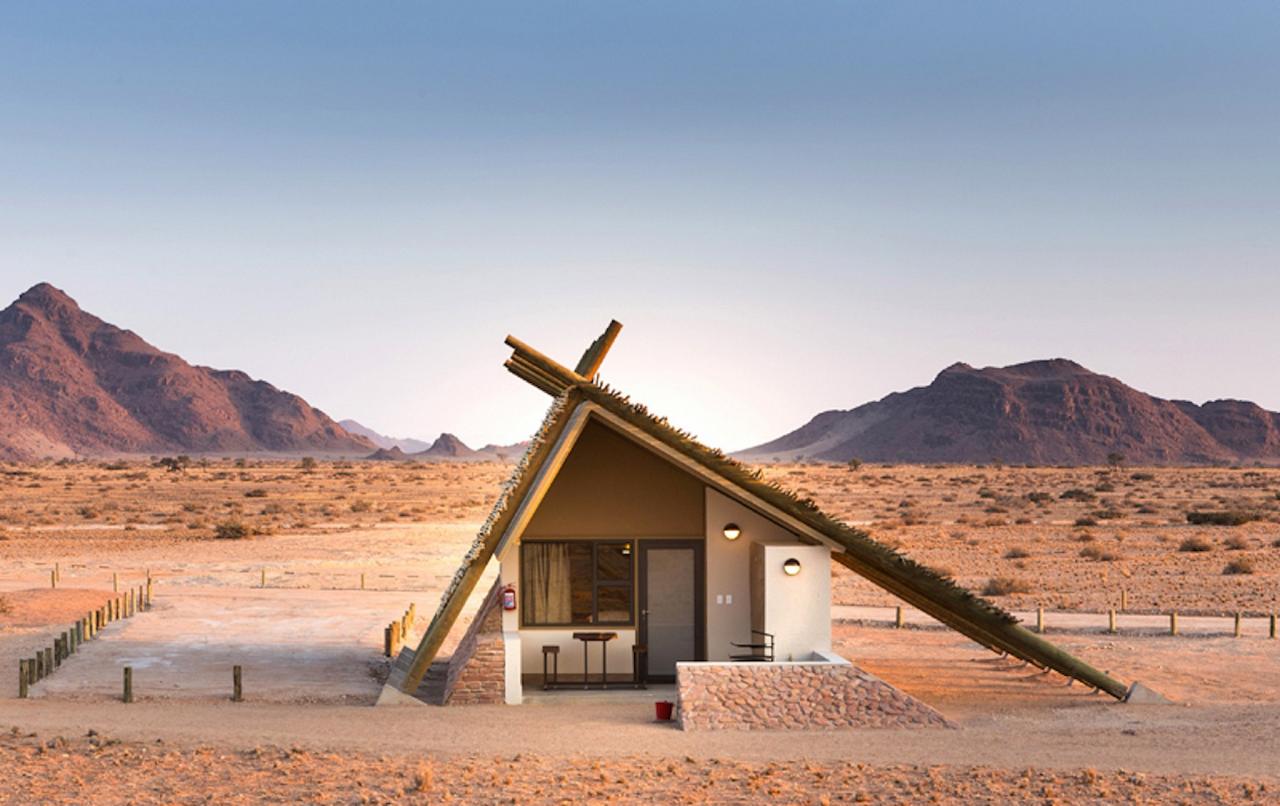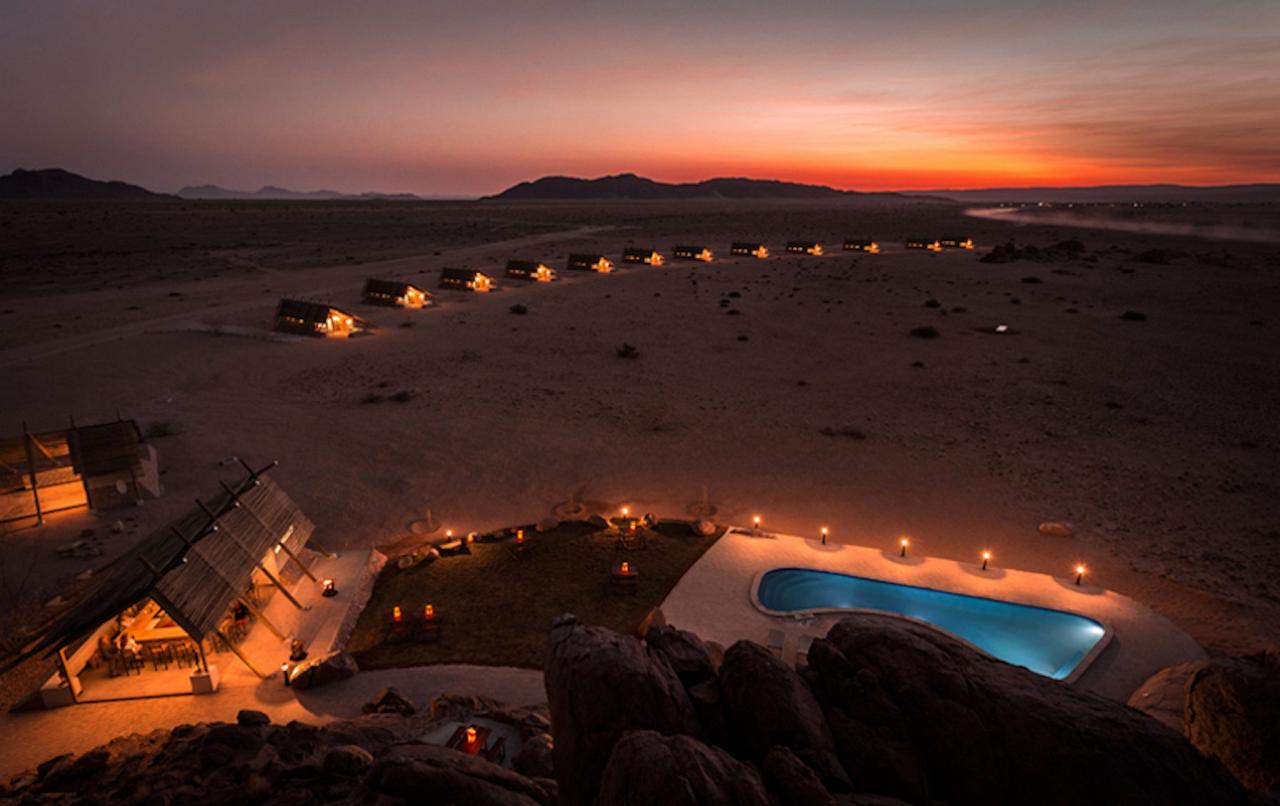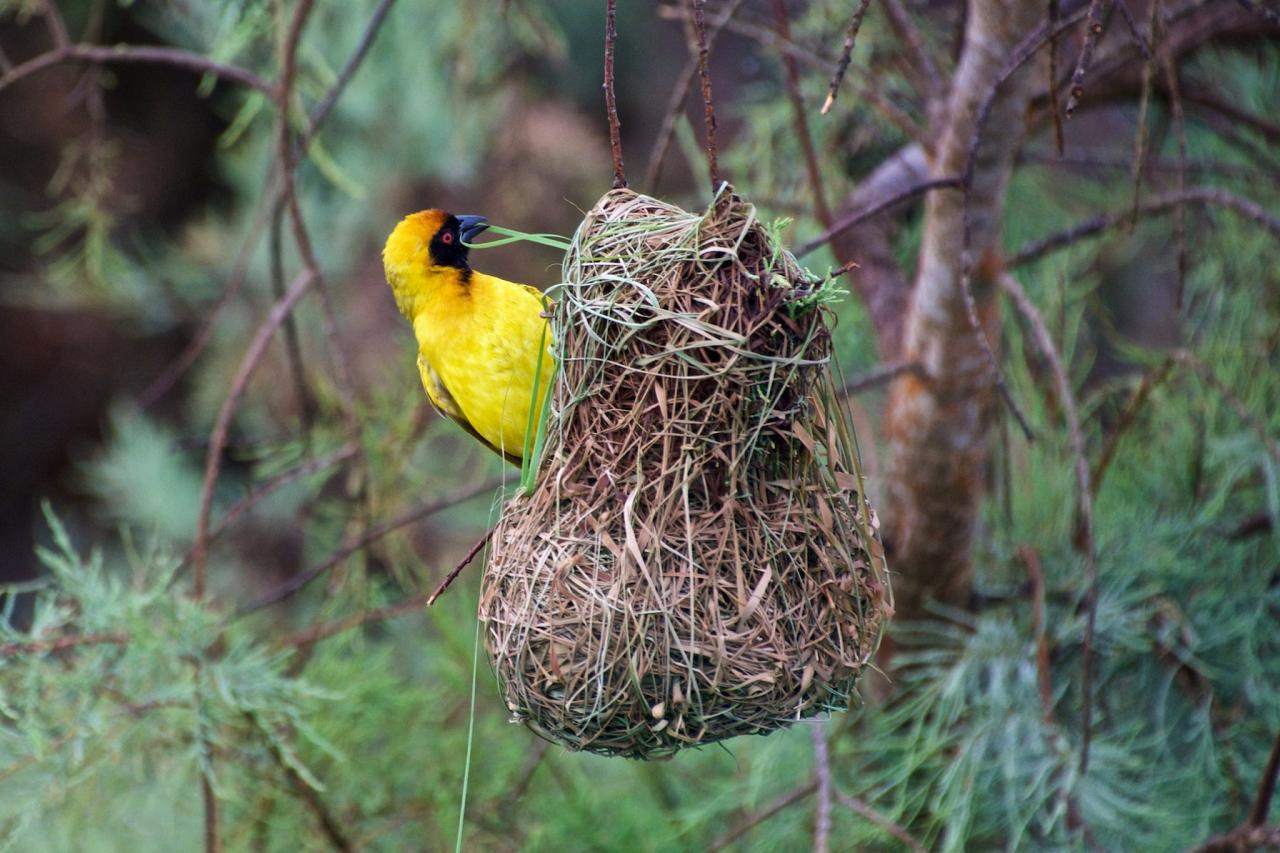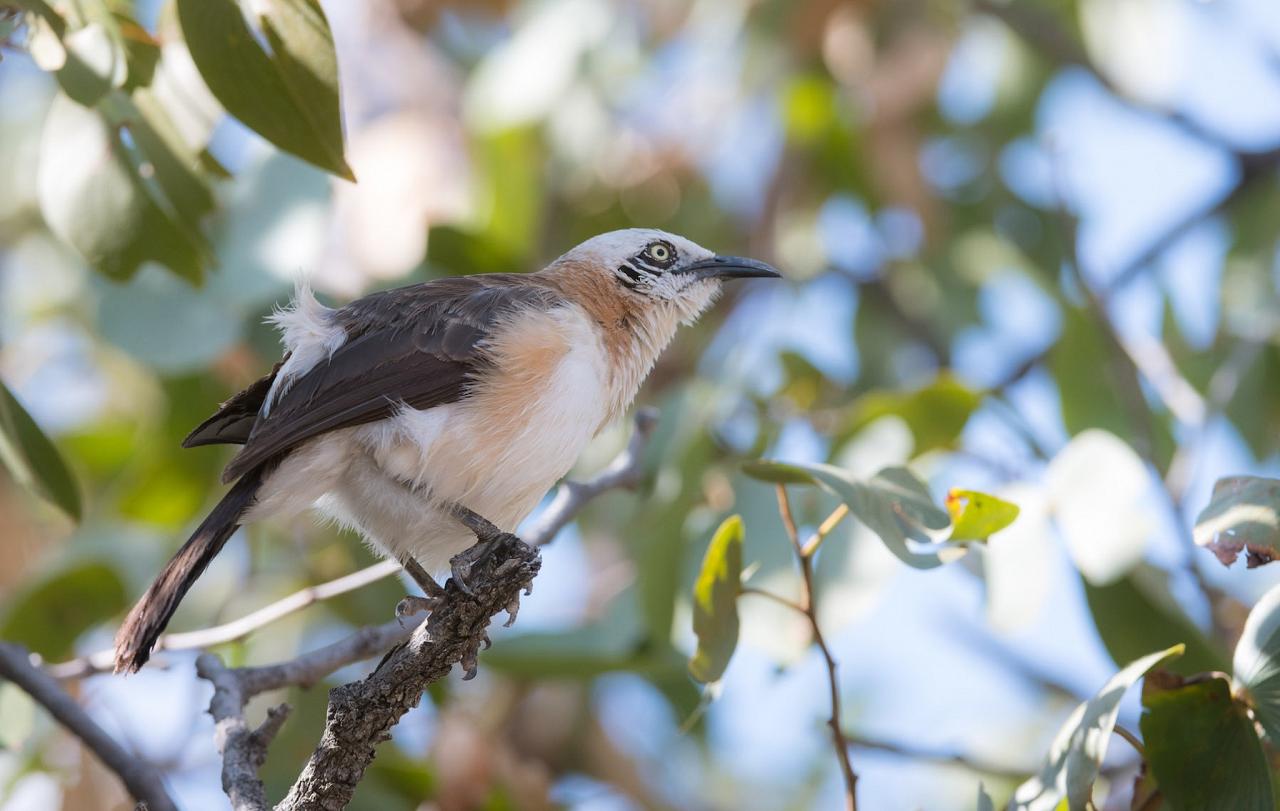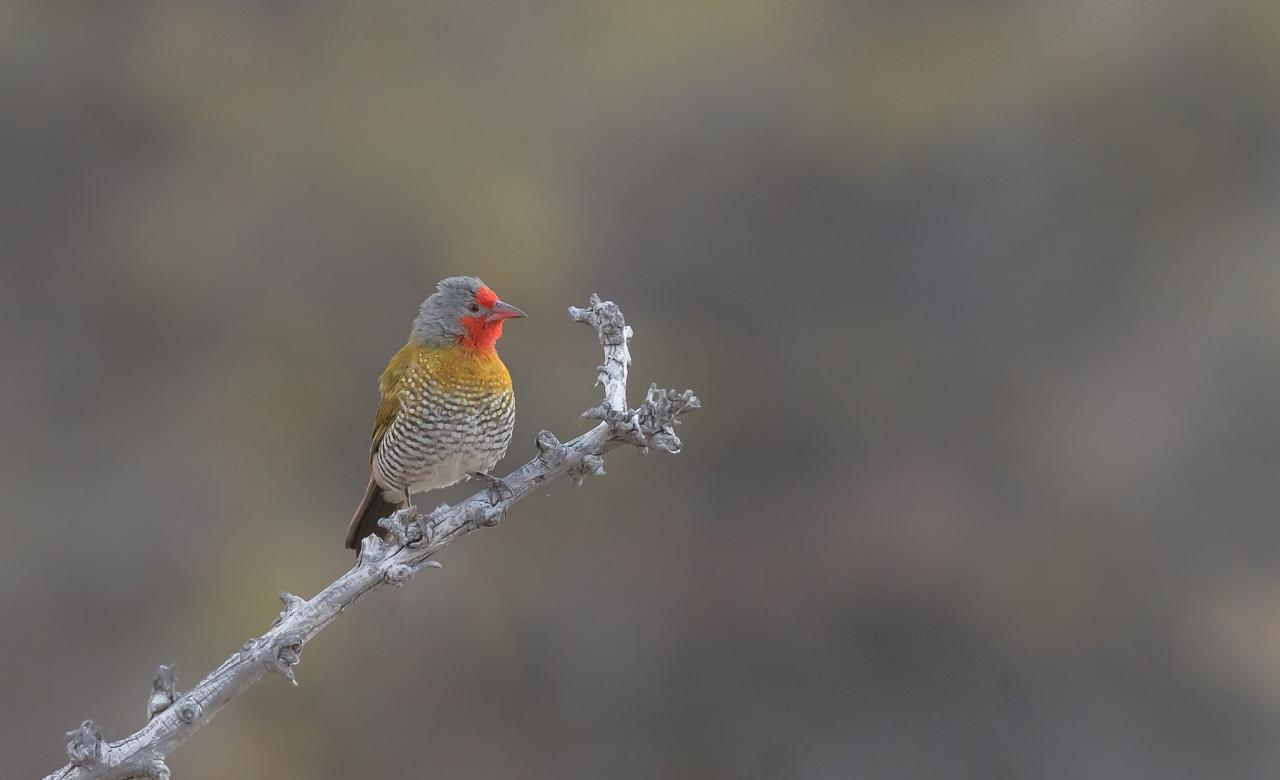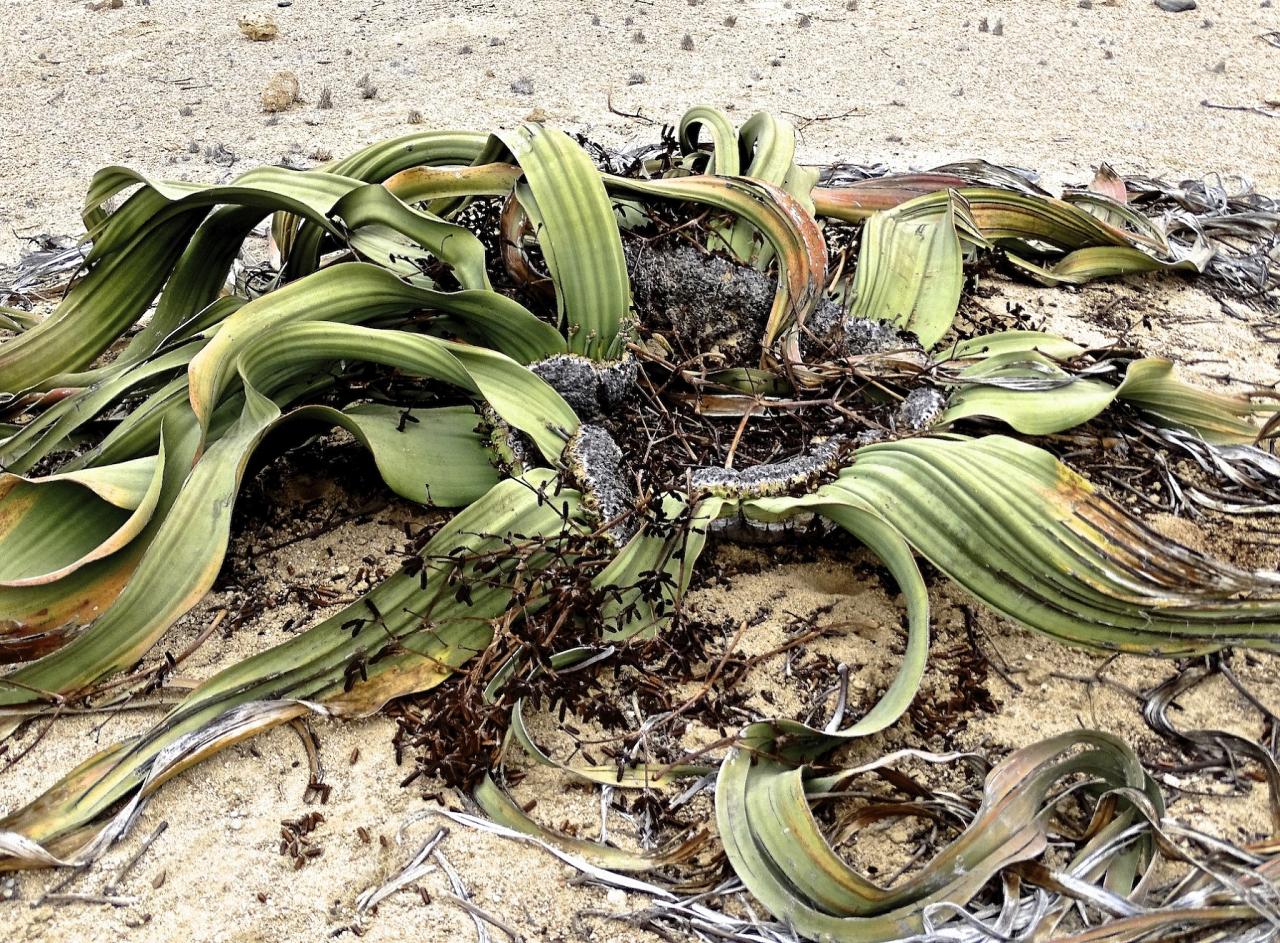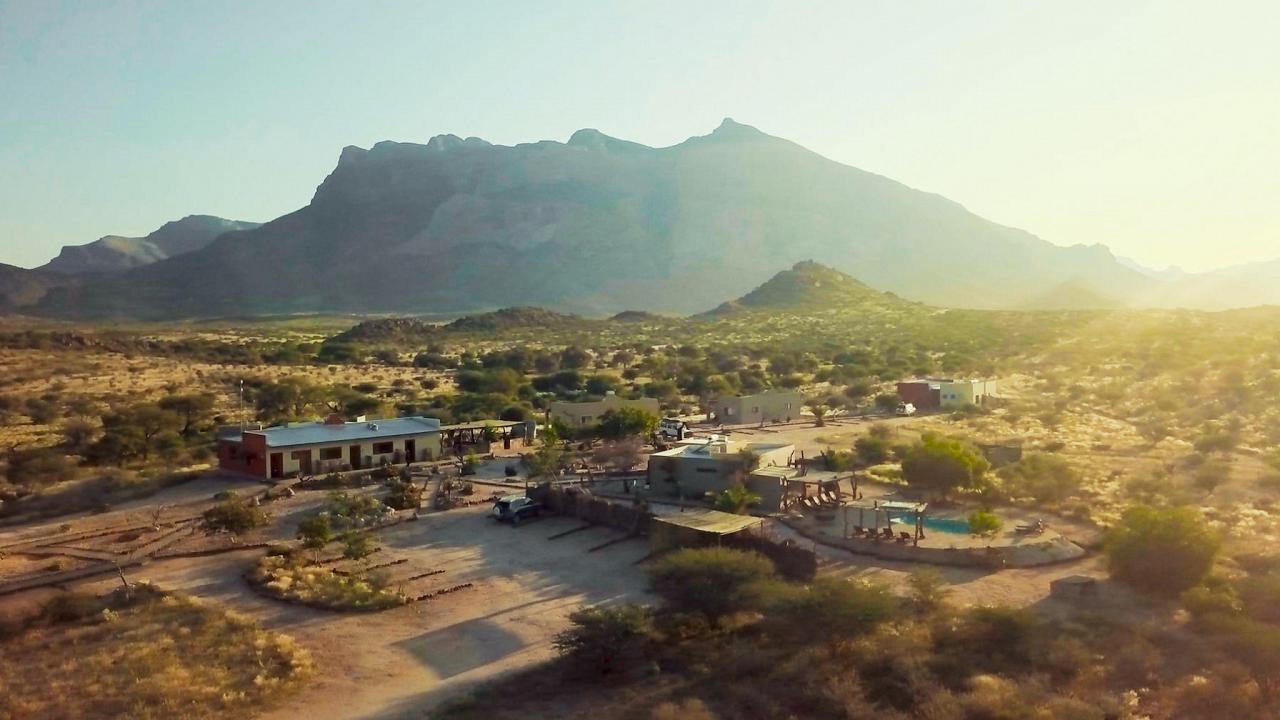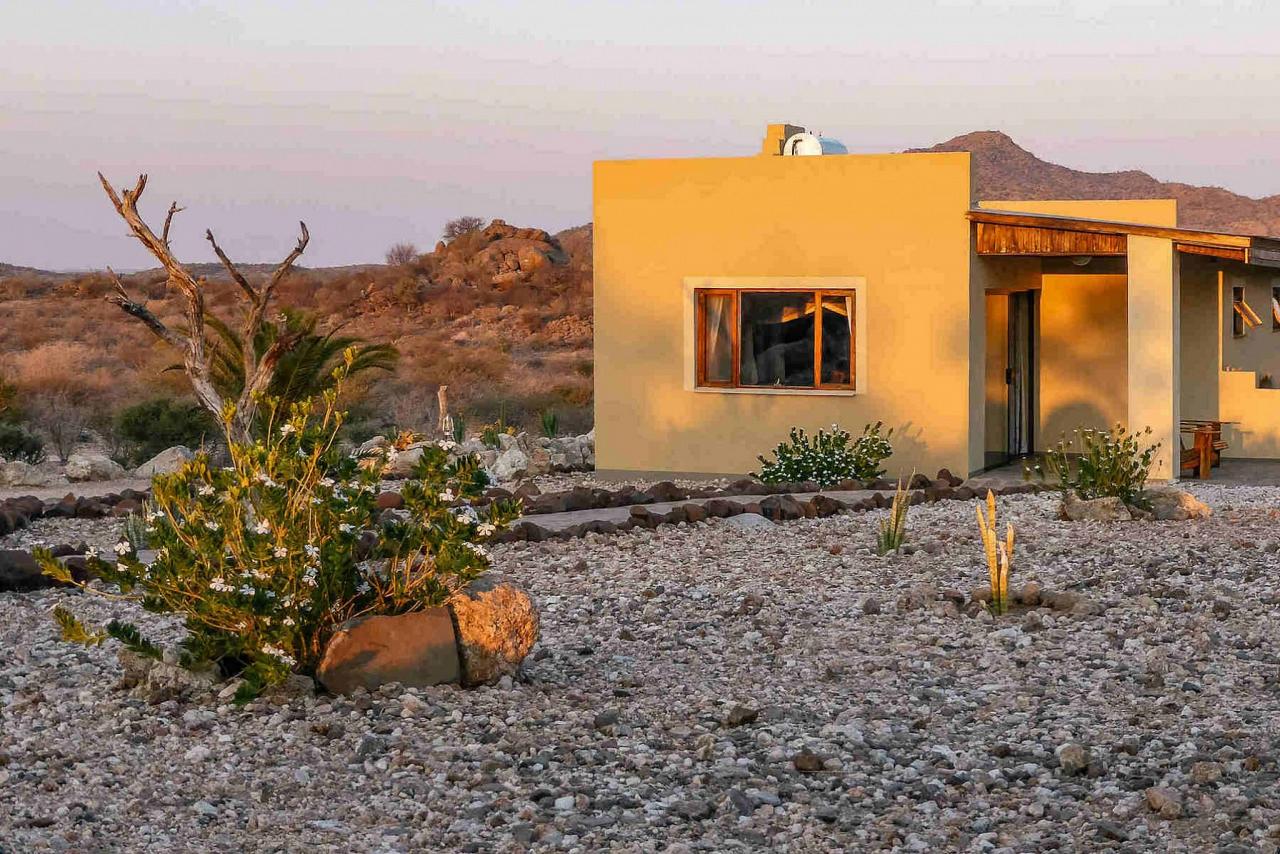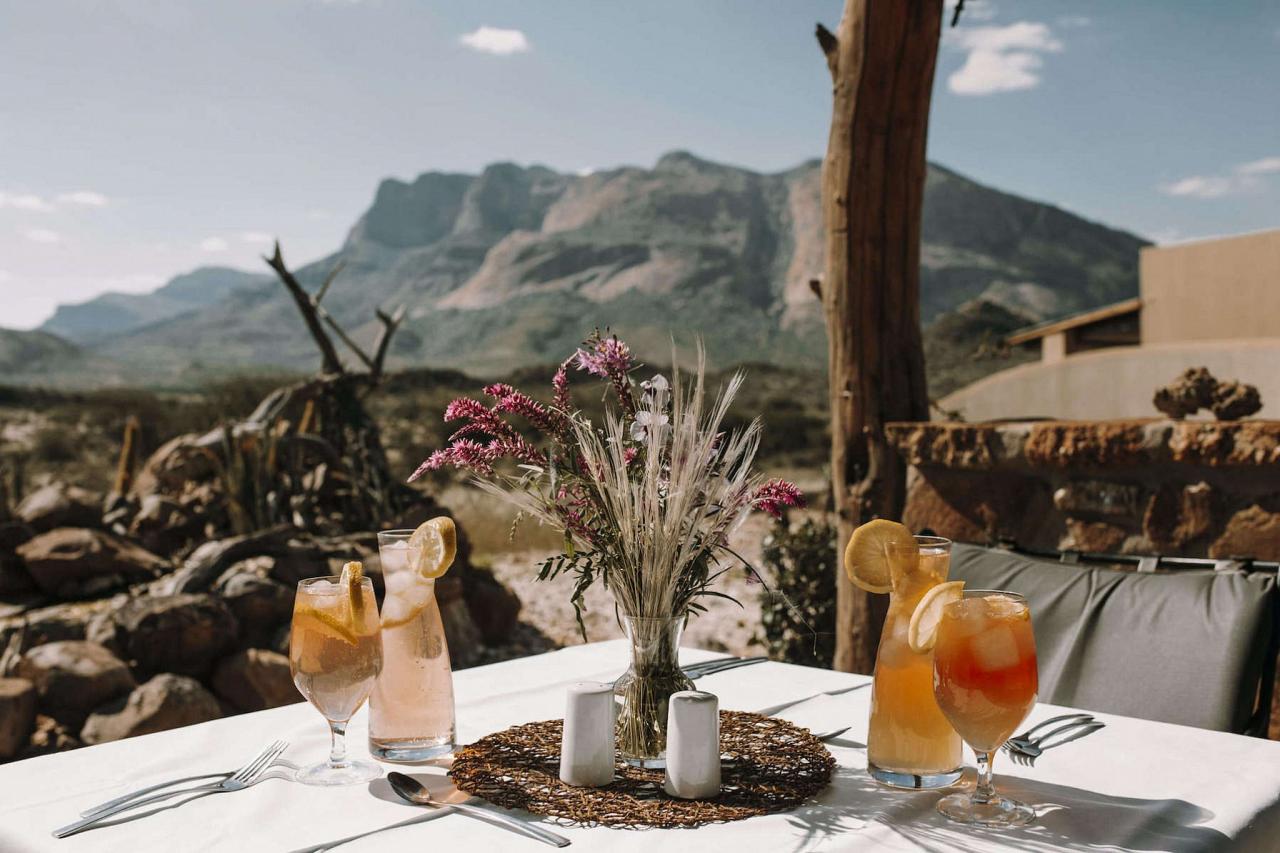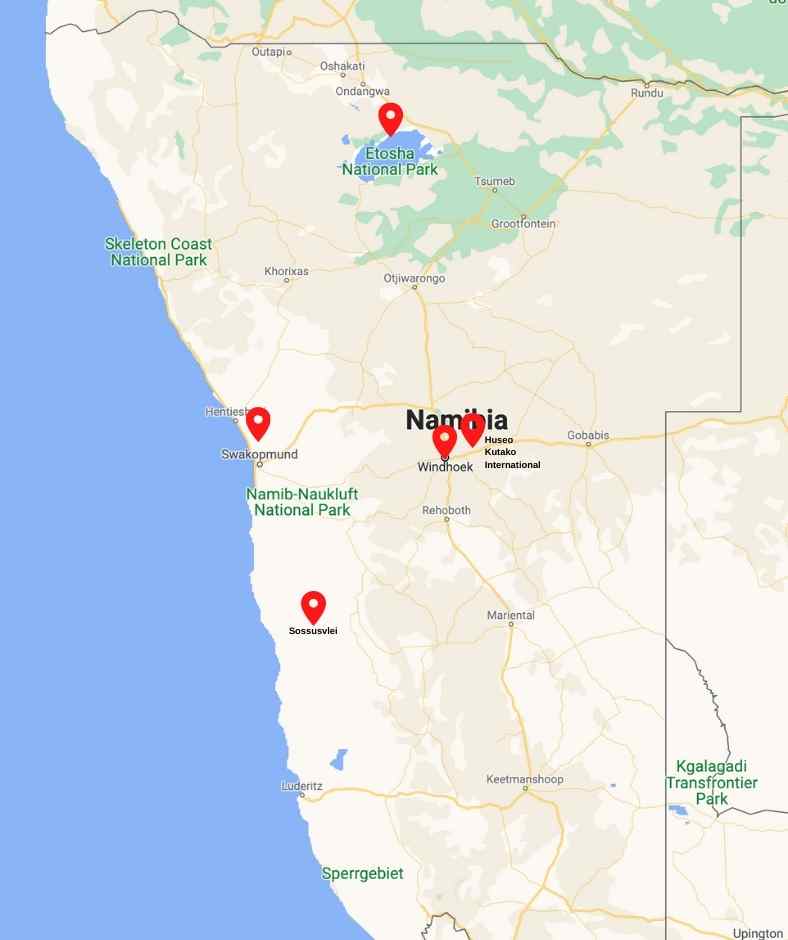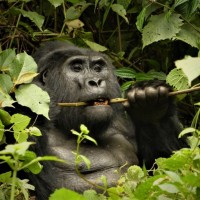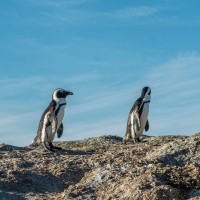- Overview
- Full Itinerary
- Photo Gallery
- Costing
- Travel Details
- Trip Reports
- Guides
- Map
- Know Before You Go
- Other Trips You May Like
Designed to pair with our South Africa tour! Book both tours and we'll cover your hotel night between trips, up to $300.
Namibia hosts superlative scenery, a dramatic arid landscape of great beauty. Along our route we witness massive red dunes, fanciful granite outcrops, isolated, iconic inselbergs, colonial Swakopmund on the scenic coast, and world-renowned Etosha National Park. We also find a wonderful array of arid-land birds, many not found in other parts of Africa.
The Namib is the oldest desert in the world, with oases for a rich and sometimes odd array of mammal, plant, and birdlife. Elephant, Oryx, Blesbok, hornbills, Rockrunner, Herero Chat, Dune Lark, numerous birds of prey, and more await! Highlights also include time at the vivid red dunes of Sossusvlei, which contrast coastal Walvis Bay and the rugged Erongo Mountains.
For many a highlight of the tour is time at stunning and wildlife-rich Etosha National Park, where Elephant, Zebra, and other species congregate at scenic waterholes and birds abound.
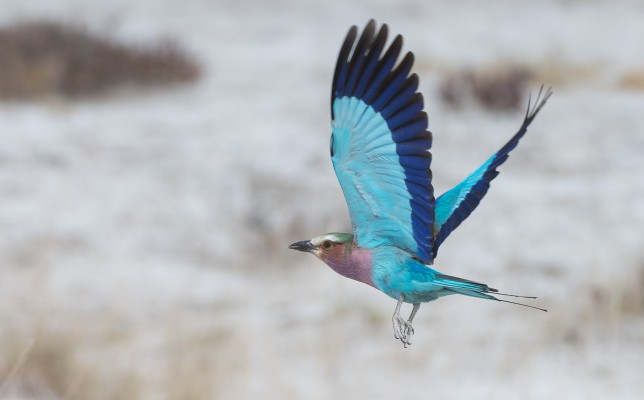


Tour Highlights
- Discover the Namib, the world’s oldest desert, famous for massive red dunes at Sossusvlei
- Look for signature bird species such as Rockrunner, Herero Chat, Hartlaub’s Spurfowl, and Dune Lark
- Walk amidst the fanciful granite outcrops of the Erongo Mountains, known for impressive wildlife, rock art, and over 200 species of birds
- Look one of the most bizarre plants on the planet, the Welwitschia
- Watch exciting raptors such as African Black (Verreaux’s), Martial, and Booted Eagles, Black-chested Snake Eagle, Lanner and Peregrine Falcons, Rock Kestrel, and more
- See arid-land specialty birds including chats, coursers, sandgrouse, numerous larks, bustards, and korhaans
- Enjoy the colonial seaside town of Swakopmund
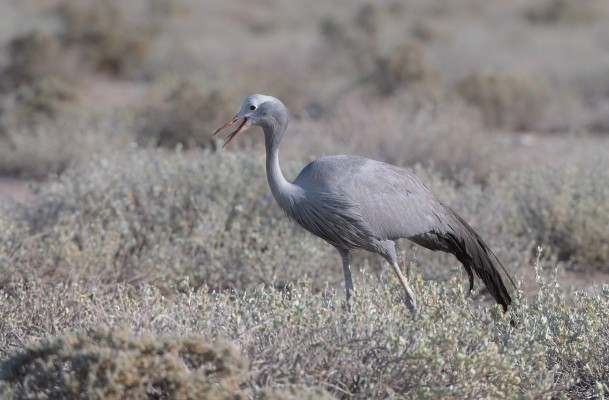
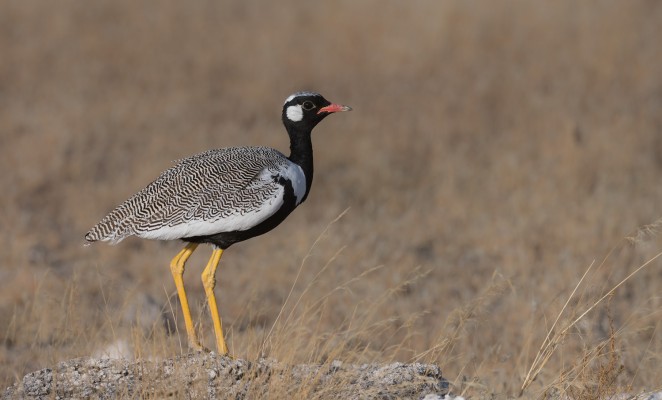
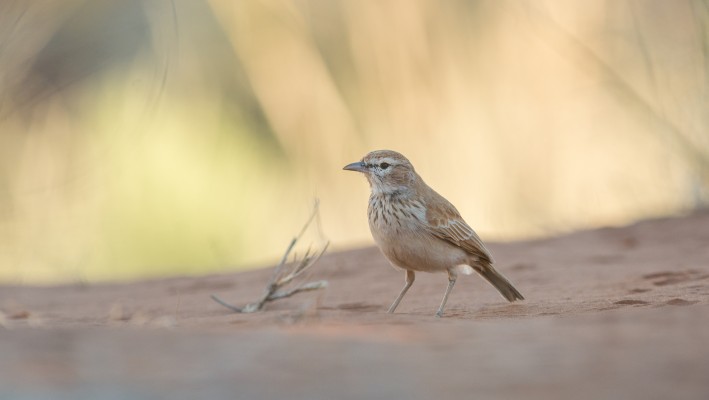
Trip Itinerary
Itineraries are guidelines; variations in itinerary may occur to account for weather, road conditions, closures, etc. and to maximize your experience.
Sun., Oct. 4 Arrivals in Windhoek, Namibia
Welcome to Namibia! The River Crossing Lodge just outside of Windhoek is in a perfect location to start the Namibia portion of our journey. The landscape reminds us of New Mexico, with acacia savannah and golden hued grasses under puffy white clouds. River Crossing Lodge is perched in the hills above the city. We check rocky slopes close to town that should yield Short-toed Thrush, White-tailed Shrike, Barred Warbler, and with luck, a favorite trip bird for some, the Rockrunner. At night, the city lights make its presence more obvious, but during the day it’s easy to feel miles away from anywhere in this landscape of beautiful rolling hills, rocky outcrops, and gold lit valleys. The simple cottages perch above the slopes with spectacular views of the valleys and vistas below. Dining is right there, and they serve delicious meals.
Accommodations at River Crossing Lodge, Windhoek (D)
Mon., Oct. 5 Okonjima Reserve
This morning, we head through the modern and clean city of Windhoek and on out to Okonjima Reserve. This is a three-hour drive, and our plan is to arrive in time for a game drive. Along rocky outcrops we can look out for Hartlaub’s Spurfowl and Rockrunner as we go. Our lodge area is known for good chances to see some of the more elusive species such as Brown Hyena, Leopard, and even Pangolin.
It is also an excellent area for birding. Thornveld species around the lodge include Damara Red-billed, Monteiro’s, Yellow-billed and Grey-billed Hornbill, Kalahari Scrub Robin, Carp’s and Ashy Tits, Crimson-breasted Shrike, Chestnut Weaver, White-tailed Shrike, Rüppell’s Parrot, Rosy-faced Lovebird, Violet Woodhoopoe, Red-eyed Bulbul, Namaqua Dove, Southern Pied and Bare-cheeked Babblers, Marico Sunbird, Pearl-spotted Owlet, and Southern White-faced Scops and Scops Owls.
Accommodations at Okonjima Plains Camp, Okonjima Reserve (B,L,D)
Tues., Oct. 6 – Fri., Oct. 9 Etosha National Park
Today we head on to the incredible Etosha National Park where we have a prime location to watch wildlife and enjoy ample space to explore. Etosha is one of the most magnificent game parks in Africa, teaming with large mammals and a grand mix of birds; the current park list features close to 400 species of birds.
For many, our time here is a highlight of the Namibia portion of the tour, where Elephant, Zebra, and other species congregate at scenic waterholes and birds abound. We start here, then continue to fanciful, isolated mountain ranges that contain unique species and, on the coast, passing through vast stretches of Namib Desert.
The main habitat upon entering Etosha is Mopane scrubland. Kori Bustard, the heaviest flying bird at 42 pounds, is a signature species here. In some areas, Acacia nebrownii may be in bloom, a favorite food of giraffes. The small yellow pompoms provide protein-rich food for many browsers here and birds love them too.
We are based in the park at two different camps, two nights on each side of the park, so that we experience a good mix of habitats while in this large, protected area. Our plan lets us explore without retracing our steps with more time for birding and finding wildlife. Both of our camps provide wonderful game viewing at night as well as providing opportunities to see nightjars and owls.
Etosha National Park is famous for its large game populations and during our stay here we should see Lion, Elephant, Burchell’s Zebra, Red Hartebeest, Blue Wildebeest, Springbok, Oryx, Giraffe, Greater Kudu, and several smaller antelopes. Among the rarer species regularly seen are Black Rhino (especially at waterholes at night), Cheetah, and Black-faced Impala, a subspecies only found in Namibia. We take time to see the various species well and there are excellent photo opportunities.
By the Von Lindequist Gate on the east side of the park, we find the open grasslands are home to Namibia’s isolated population of Blue Crane, Temminck’s Courser, Grey-backed and Chestnut-backed Sparrowlarks, and Eastern Clapper Lark. The elusive Black-faced Babbler occurs in dense Terminalia woodlands in this area. Birding is great right from our lodgings, perfect for early morning birding options.
On our cross-over day near the center of the park, the Halali area is wooded, a great stop for us as it’s the best site to see Violet Woodhoopoe, Bare-cheeked Babbler, and Carp’s Tit. Trees and shade are most welcome at this great rest stop and picnic site.
We then move on to the grassy plains north of Okaukuejo Camp, which are the best areas in the park to see Buffy Pipit, Southern Ant-eating Chat, Kalahari Scrub-Robin, Pink-billed Lark, Double-banded Courser, Northern Black (White-quilled) Korhaan, and Spike-heeled Lark. Raptors are abundant and we should see Martial Eagle, Secretary Bird, Bateleur, Ovambo Sparrowhawk, Tawny Eagle, and Greater Kestrel. Migrant raptors such as Western Red-footed Kestrel, Lesser Spotted Eagle, and Yellow-billed Kite can be seen in large numbers during the wet season.
Accommodations for two nights each at Onguma Forest Camp (eastern side) & Okaukuejo Camp (western side), respectively (B,L,D)
Sat., Oct. 10 Etosha to Damaraland
This morning we leave the park and head for a fantastic area to continue our exploring. From Okaukuejo in Southern Etosha, we make our way southwest toward the dramatic escarpments of Damaraland, arriving at Grootberg Lodge for a two-night stay perched atop the Grootberg Plateau. This transition from savannah to rugged semi-desert offers a striking shift in habitat and birdlife. Along the drive and around the lodge, we are on the lookout for regional specialties such as Herero Chat, Benguela Long-billed Lark, Monteiro’s and Damara Hornbills, Rockrunner, Hartlaub’s Spurfowl, White-tailed Shrike, and Short-toed Rock Thrush—each adapted to the rocky outcrops and sparse vegetation of this arid zone.
Our lodge overlooks the Klip River Valley and the red bluffs of the Etendeka Plateau create a dramatic vista. The lodge is designed around these views, from the expansive windows to the large viewing deck with plenty of seating to the infinity pool. We are warmly welcomed. The lodge is focused on sustainability and is solar based.
Accommodations at Grootberg Lodge (B,L,D)
Sun., Oct. 11 Full Day Exploring Damaraland from Grootberg
Accommodations at Grootberg Lodge (B,L,D)
Mon., Oct. 12 & Tues., Oct. 13 Erongo Mountains — A Geologic Wonderland!
Before departing Grootberg Lodge, we begin the morning with a short birding walk along the plateau’s edge, where we may encounter Rockrunner darting through the underbrush, White-tailed Shrike perched conspicuously, and Hartlaub’s Spurfowl calling from the rocky slopes. As we journey through the heart of Damaraland en route to the Erongo Mountains, the landscape unfolds into a tapestry of basalt ridges, dry riverbeds, and open plains—prime habitat not only for desert-adapted birds like Damara Hornbill, Benguela Long-billed Lark, and Monteiro’s Hornbill, but also for iconic mammals. Keep an eye out for graceful herds of Springbok and Oryx, browsing Giraffe, and—if luck is on our side—even the elusive Black Rhino moving through the scrub.
The Erongo Mountain Range, an expanse of rugged and picturesque wilderness with fanciful geologic features, is one of Namibia’s most iconic places to visit, and in addition to excellent birding we find magnificent caves and rock painting sites, and an impressive array of wildlife species. The hoofed mammals include Wildebeest, Impala, Blesbok, Waterbuck, Kudu, Mountain Zebra, Oryx, Eland, and Springbok, and this lovely range is home to over 200 species of birds. There are also Rhino, Elephant, Warthog, and Giraffe, and with luck we even have a chance at finding predators including Leopard and Cheetah.
We stay at The Erongo Wild lodge, located in the spectacular Erongo Mountain hills. Birding in this area is rewarding and supports many of the Namibian near-endemics such as Violet Woodhoopoe, Damara Red-billed Hornbill, Rüppell’s Parrot, White-tailed Shrike, Carp’s Tit, Rockrunner, Hartlaub’s Spurfowl, and other species like Freckled Nightjar and Rosy-faced Lovebird. The whole environment is photogenic and magical.
Accommodations at Ondudu Safari Lodge, Erongo Mountains (B,L,D)
Wed., Oct. 14 Namibia’s Scenic Coast | Swakopmund
Today we enjoy an early morning walk among the geologic formations at Erongo. Our main species this morning is the Hartlaub’s Spurfowl. After breakfast, we pack up and make our way out of the mountains and over to the coast. This is a good day to watch for raptors such as the African Black (Verreaux’s) Eagle, Martial Eagle, Booted Eagle, and Black-chested Snake Eagle, Lanner Falcon, Peregrine Falcon, and Rock Kestrel are all fairly common.
Along the way, there is a rich diversity of plant life including Welwitschia plant, the only member in the family Welwitschia and one of the more bizarre plants on the planet, on the western foot of the mountain. This plant is distantly related to the conifers of Europe and some of these plants are estimated to be 300 – 550 years old; the oldest determined age was 920 years. We drive via Spitzkoppe, one of a series of impressive granite inselbergs that rise steeply out of the desert plains. It is at this imposing batholith that we have our best chance of finding the near-endemic Herero Chat.
As we continue, the landscape becomes more arid and we look for the arid specialty species such as the rare and declining Burchell’s Courser, and many other sandy desert species like Stark’s Lark and other strategic species like Karoo Long-billed Lark. Other species that we may find include Mountain Wheatear, Familiar and Karoo Chats, Pale-winged Starling, Red-faced and White-backed Mousebirds, Bokmakierie, Grey-backed Cisticola, Black-chested Prinia, and Sabota Lark.
On the plains surrounding these hills we should see Rüppell’s Korhaan, Namaqua Sandgrouse, Chat Flycatcher, Verreaux’s and Booted Eagles, Augur Buzzard, and African Hawk-Eagle. Lanner Falcon also occur in the hills, as do Rosy-faced Lovebird, Carp’s and Ashy Tits, White-throated Canary, Layard’s Warbler, White-tailed Shrike, Double-banded Courser, Sabota, Red-capped, Spike-heeled, White-browed Sparrow-Weaver, Mountain Wheatear, Pale-winged Starling, Bradfield’s Swift, Rockrunner, both Monteiro’s and Damara Red-billed Hornbills, Dusky and Scarlet-chested Sunbirds, Marico and Chat Flycatchers, Crimson-breasted Shrike, Great Sparrow, Sociable Weaver, Scaly-feathered Finch, Lark-like Bunting, and the handsome Ground-scraper Thrush.
Swakopmund is a popular seaside resort because of its old-world charm and relaxed atmosphere. Swakopmund exudes romance and history, which makes it a rich cultural melting pot of old and new. The town is an eclectic mixture of Bohemia and Bavaria which makes it home to artists, hippies, strait-laced descendants of German settlers, stately Herero women in Victorian dresses, and hardworking miners, game rangers, safari operators, and fishermen. Dining selections are excellent here and we enjoy some of our favorite restaurants.
Accommodations at Pension Rapmund, Swakopmund (B,L,D)
Thurs., Oct. 15 Swakopmund & Walvis Bay
We spend most of the morning birding around the Walvis Bay Lagoon and we have our first chance here to find Dune Lark, Namibia’s endemic beauty. We are early for the peak numbers at Walvis Bay (October to April) when migrant birds have moved in from the northern hemisphere by the thousands but there are still plenty of species to see, and the variety of the birds around the lagoon is impressive. This area has the highest density of Chestnut-banded Plover, a near-threatened species, in the world. The Walvis Bay Lagoon happens to be one of Africa’s most important shorebird stopovers (it is a RAMSAR site), where we see incredible numbers of Greater and Lesser Flamingos and some extremely localized species, such as the diminutive Damara Tern.
Resident birds of the lagoon include Pied Avocet, Black-winged Stilt, White-fronted Plover, and Three-banded Plover, as well as the sought-after Chestnut-banded Plover. Migratory species like Common Greenshank, Red Knot, Ruddy Turnstone, Curlew Sandpiper, Whimbrel, and Bar-tailed Godwit are possible.
We stop in at the Swakopmund salt works to look for Gray’s Lark. This pale-colored desert lark can be difficult to locate as it blends in perfectly with the expansive gravel plains that it frequents in the true Namib Desert. Another good find would be the pale form of Tractrac Chat, as well as Familiar Chat, Red-capped Lark, and with luck, Rufous-eared Warbler and Karoo Eremomela. Some of the water birds encountered can be White-breasted, Bank, Cape, and Crowned Cormorants, Cape Teal, Blue-billed (Hottentot), Red-billed and Maccoa Ducks, Cape Shoveler, Grey-headed Gull, and Little Grebe. Greater and Lesser Flamingos should be here feeding, and Chestnut-banded Plover is possible.
We return to enjoy another night in the seaside town of Swakopmund, known for its wide-open avenues, colonial architecture, and its surrounding otherworldly desert terrain. Founded in 1892 as the main harbor for German Southwest Africa, Swakopmund is often described as being more German than Germany. While touristy, we have fun here and are assured of some fun dining in a local restaurant.
Accommodations at Pension Rapmund, Swakopmund (B,L,D)
Fri., Oct. 16 Namib-Naukluft National Park | Sossusvlei & Deadvlei
Today we head down the coast, then leave behind the cold Benguela Current and head to one of the most beautiful areas of the Namib Desert at Sossusvlei, stopping regularly to look for arid zone specialists such as Ludwig’s Bustard, Sociable Weaver, Pygmy Falcon, Lappet-faced Vulture, and Burchell’s Courser. The dry river courses and drainage lines are well wooded, and we should see species such as Dusky Sunbird, Rosy-faced Lovebird, and Scaly-feathered Finch along the way.
The Namib is the oldest desert in the world, with oases for a rich and sometimes odd array of mammal, plant, and birdlife. Throughout the Namib, Fiscal Shrike sit atop enormous Candelabra trees. At one stop the road comes close to aged granite mountains that skirt the plain. This is a good spot to try for Rockrunner. Elephant Trees, a succulent Moringa species, find purchase here on the stony slopes, which are smooth red basalt and granite with inclusions of feldspar—lovely! Down the road we stop to pay tribute to an enormous candelabra Euphorbia (E. virosa), that some Southern Fiscal (a type of shrike) often decorate with impaled armored ground crickets. Quiver trees (Aloidendron dichotoma) stand sentinel over a majestic view of the distant hills; take in the smell of Namib Myrrh (Commiphora virgata).
Our accommodation is situated within the Namib Naukluft National Park at the edge of the dune complex. Individual tented cabins are rustic yet modern, designed to blend in with the stark environment and keep a light footprint on the landscape with their straightforward design. Enjoy spending time in the lodge’s sheltered outdoor spaces with low comfortable seating in covered areas adjacent to sculptures of dead acacia trees, lighting contrived from the dead wood, the local building material, and expanses of glass. Feel immersed in the Namib here within granite outcrops and expansive desert views. Rooms are spacious, air-conditioned and all have private baths and patios. Perfect to take in the immense sense of peace and quiet that this vast desert brings. You may see Oryx right from your room!
Accommodations at Dead Valley Lodge, Sossusvlei (B,L,D)
Sat., Oct. 17 Full Day at Sossusvlei National Park
Because our lodging is in the park, we have an hour advantage over the many people that visit the heart of the park at Deadvlei today. We get up by starlight and depart for Deadvlei and the Elim Dunes as the sun starts to rise. During our drive, we keep our eyes peeled for Bat-eared Fox, Black-backed Jackal, Brown Hyena, and Cape Fox. Those that wish can hike to the vlei (saltpan) between enormous dunes, the largest about 1000 feet in height. Deadvlei is a large flat area where fine clays and silts have collected over the years, and when dry, crack into a cobblestoned pavement of rounded clay tiles. The pan is punctuated by the skeletons of camel thorn trees, dead for 800 or more years, when subterranean water flows shifted and left this area dry. Those that don’t climb can readily wander and enjoy photography. These are photo-worthy moments!
After the magical light of early morning, we move on to explore patches of vegetation at the base of the dune, where Dune Lark occurs in their namesake habitat. They are just the color of their environment, the iron red of the sand, and the creamy white of the vlei.
After lunch and a break at the lodge, we head back up the road along the Tsauchab River looking for “animalscapes,” mostly of Oryx backlit by the reddening dunes of sunset. We can hike into the scrub in search of more Dune Lark, and reptiles such as the Namib Sand Snake. The thorny Nara shrubs capture sand and provide food, shade and shelter to small animals and birds. They are leafless; with photosynthesis occurring in the green stems, which helps to preserve water. Here and there we could see the raised tunnels of the Golden Mole, an endemic that lives here.
Accommodations at Dead Valley Lodge, Sossusvlei (B,L,D)
Sun., Oct. 18 Sossusvlei National Park | Flight to Windhoek
This morning, enjoy a relaxed nature drive to some dunes where we can look for birds, reptiles, and mammals, depending on what we may have dipped on. Watch for Karoo Chat, Rüppell’s Korhaan, endangered Ludwig’s Bustard, Burchell’s Courser, and other arid adapted species such as Yellow Canary, Cardinal Woodpecker, and Pririt Batis.
We get up by starlight to be at the park gate for first entry and sunrise at Sossusvlei. Marvel at some of the largest sand dunes in the world, all a deep orange-red color that glows with first light. We spend the morning exploring this magnificent landscape with its unique natural history. Learn about desert plant adaptations, look for lizards, and study animal tracks left in the sand. One of the impressive sights to behold in the park is the massive nest of Sociable Weaver that often houses a pair of Pygmy Falcon.
We take a mid-morning scenic flight back from Sossuvlei to Windhoek (see the dunes from the air!) with plans to get back in time to connect with outbound flights from Windhoek. (B,L)
Cost of the Journey
Cost of the 15-Day / 14-Night journey is $8990 DBL / $9650 SGL per person, based on occupancy, from Windhoek, Namibia.
This cost includes: accommodations for 14 nights, all meals as specified in the itinerary, professional guide services, other park and program entrance fees and miscellaneous program expenses.
NEW! all tips other than your NJ guide (optional) and local guide are included (this includes tips for your driver, lodge and staff, day activities, meals and other services).
Designed to pair with our South Africa tour! Book both tours and we'll cover your hotel night between trips, up to $300.
Tour cost does not include: round-trip transportation from your home city to Windhoek, optional activities, or items of a personal nature such as laundry, telephone charges, or beverages from the bar.
Travel Details
Please plan to make air travel plans only after the minimum group size has been met. We will send you a confirmation email as soon as the trip has been confirmed.
Arrival and Departure Airport: Huseo Kutako International (WDH) in Windhoek
Arrival Details: Please plan flights to arrive October 4, in time for dinner. We strongly suggest arriving at least a day early to avoid flight delays and have time to rest before the tour starts.
Departure Details: Plan flights to depart October 18, after 3:00 PM
Travel Tips: We strongly suggest arriving at least a day early. We can book you an early night room at the River Crossing Lodge in Windhoek, our first night tour hotel. It's a beautiful place to relax after a long flight and there is a pool and restaurant on site.
Entry Requirements: See "Essential Information" section under the "Know Before You Go” tab.
Browse below for trip reports and species lists from past versions of this and other tours from this destination.
Namibia
- September 2014
- July 2022
- October 2022
- September 2024 (Namibia-Botswana Trip)
-
Tim Smith — Namibia Expert

Tim was born in Zimbabwe and his early years of experiencing wildlife and nature brewed a deep passion. After returning to Africa from Australia, he studied as a field guide in the greater Kruger area. Tim started his guiding pathway in central Namibia before exploring and working country wide as well as various countries in southern Africa. Photography and animal behaviour drive his zest for the African bush with birds and African Wild Dog being his greatest enjoyments.
Other trips with Tim Smith — Namibia Expert
-
Greg Smith, Guide Emeritus
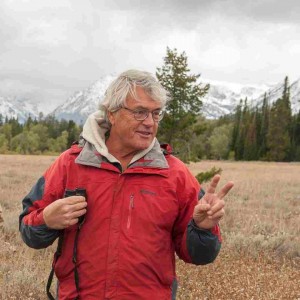
Greg spent over 20 years working as an ecologist managing sensitive bird species for California State Parks along the Central coast. His decision to promote to the Park Superintendent series allowed him to work directly with partners in conserving lands for the benefit of birds, people, and resources. And then he retired! Three days later he started his now eleven-year career with Naturalist Journeys by leading his first of over sixty tours. He had already traveled to all seven continents, and now has a Master Bird Banding permit, both of which made him a great fit to work with Peg and to lead natural history and birding tours to her exceptional array of tour locations. His relaxed style and breadth of knowledge makes his tours both educational and fun, all while exploring Naturalist Journeys' diverse locations and viewing the areas' distinctive birds, wildlife, and plant species. Two of his favorite past times are good food and photography, so take a peek at his Flickr site to see some of what he shares with those that join him on his tours.
Other trips with Greg Smith, Guide Emeritus
-
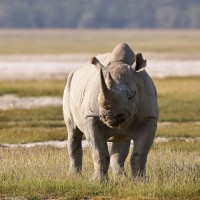 Tanzania: Wildlife & Birding Safari Sold as a private tour.February 24 - March 9, 2026, w/Amboseli & Nairobi National Parks extension
Tanzania: Wildlife & Birding Safari Sold as a private tour.February 24 - March 9, 2026, w/Amboseli & Nairobi National Parks extension -
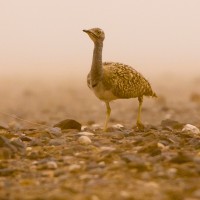 Morocco: Birding & NatureApril 2 - 16, 2026
Morocco: Birding & NatureApril 2 - 16, 2026
-
Essential Information +
Pace & Protocols +
Packing List +
Suggested Reading List +
Useful Links +
Photo credits: Banner: Springbok by Arne Smith on Unsplash; Giraffe by Peg Abbott; Dead Trees by Marcelo Novais on Unsplash; Lesser Flamingo, Bob Rodrigues; Lilac-breasted Roller, courtesy Batis Birding Safaris (BBS); Rosy-faced Lovebirds, courtesy BBS; Violet-eared Waxbill, courtesy BBS; Blue Crane, courtesy BBS; Northern Black Korhaan, courtesy BBS; Dune Lark, courtesy BBS; Springbok by Arne Smith on Unsplash; Desert Quiver Camp, courtesy of desertquivercamp.com; Martial Eagle, by BBS; Lodge room, courtesy of desertquivercamp.com; Violet-eared Waxbill, by BBS; Quiver camp at night, courtesy of desertquivercamp.com; Red-billed Hornbill, by BBS; Chestnut-banded Plover, Bob Rodrigues; Chestnut-vented Warbler, Bob Rodrigues; Pink-backed Pelican, Bob Rodrigues; Greater Flamingo, Bob Rodrigues; Hohenstein Lodge x2, courtesy of ondili.com; Rosy-faced Lovebird, Bob Rodrigues; White-faced Owl, by BBS; Dune Lark, by BBS; Brandberg White Lady Lodge, courtesy of brandbergwllodge.com; Cheetahs, by Peg Abbott; Southern Carmine Bee-eater, Greg Smith; Red-headed Finch, by BBS; Montiero’s Hornbill, Bob Rodrigues; Giant Kingfisher, Peg Abbott; Dead Trees by Marcelo Novais on Unsplash; Heavy Sky by Johnny Chen on Unsplash; Brandberg White Lady Lodge, courtesy of brandbergwllodge.com; Oryx Photo by Joe McDaniel on Unsplash; Flamingos at Windehoek Photo by Ryan Cheng on Unsplash; Desert Quiver Camp Lodge x3, courtesy of desertquivercamp.com; Weaver by Fabiana Rizzi on Unsplash; Bare-cheeked Babbler, BBS; Green-winged Pytilia, BBS; White-faced Owl, BBS; Welwitchia by Alex Vargo; Hohenstein Lodge x3, courtesy of ondili.com.








